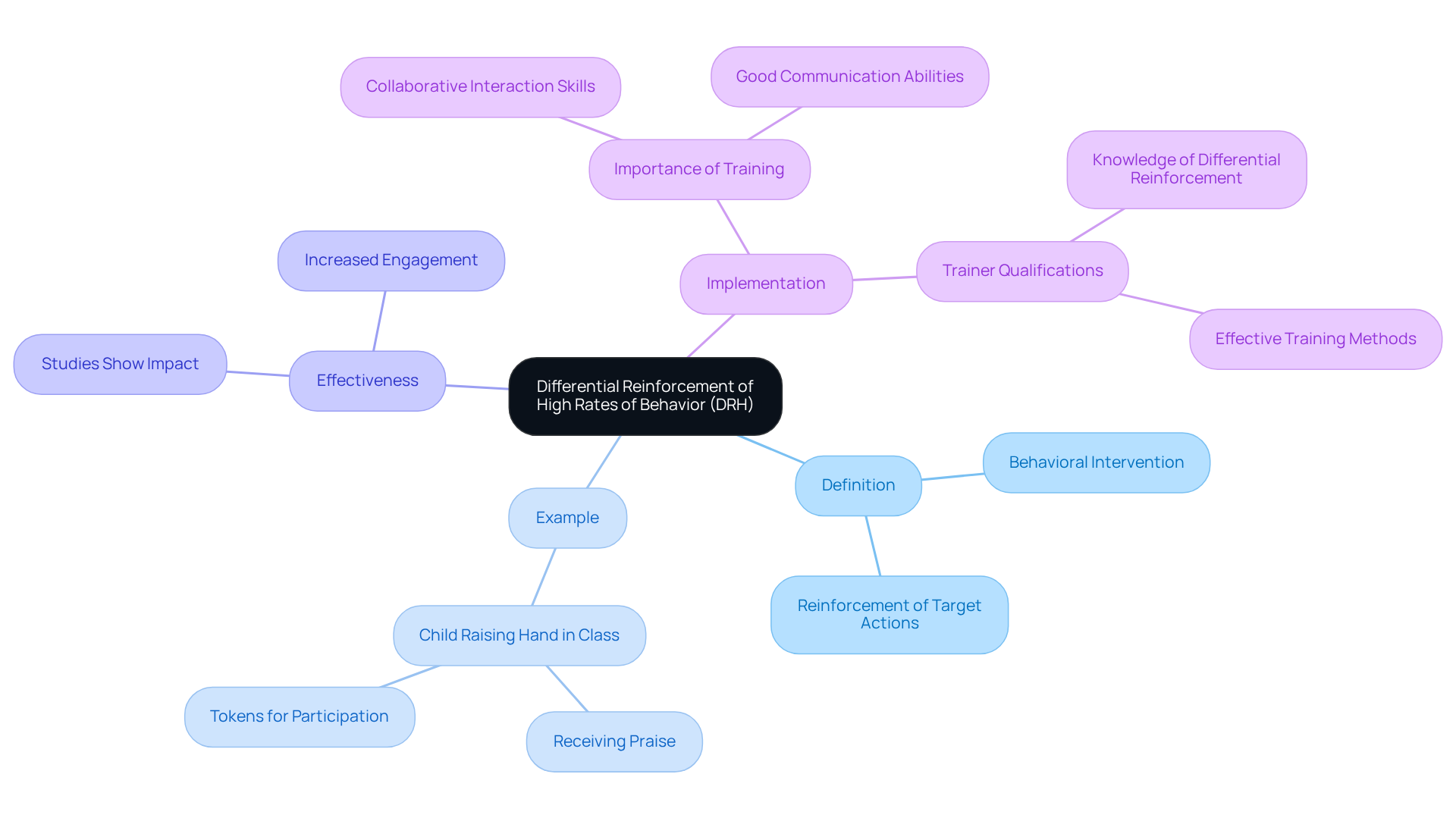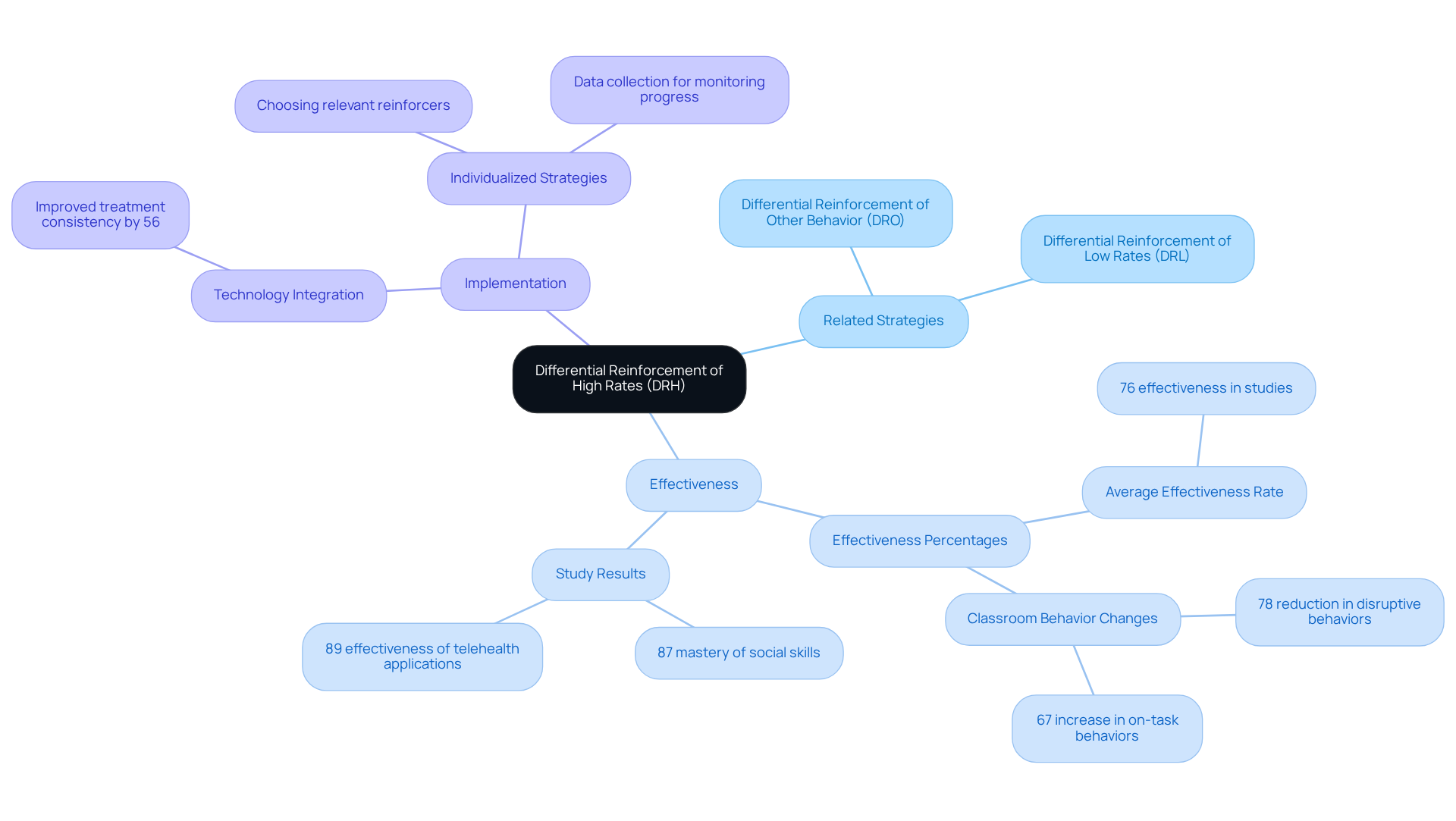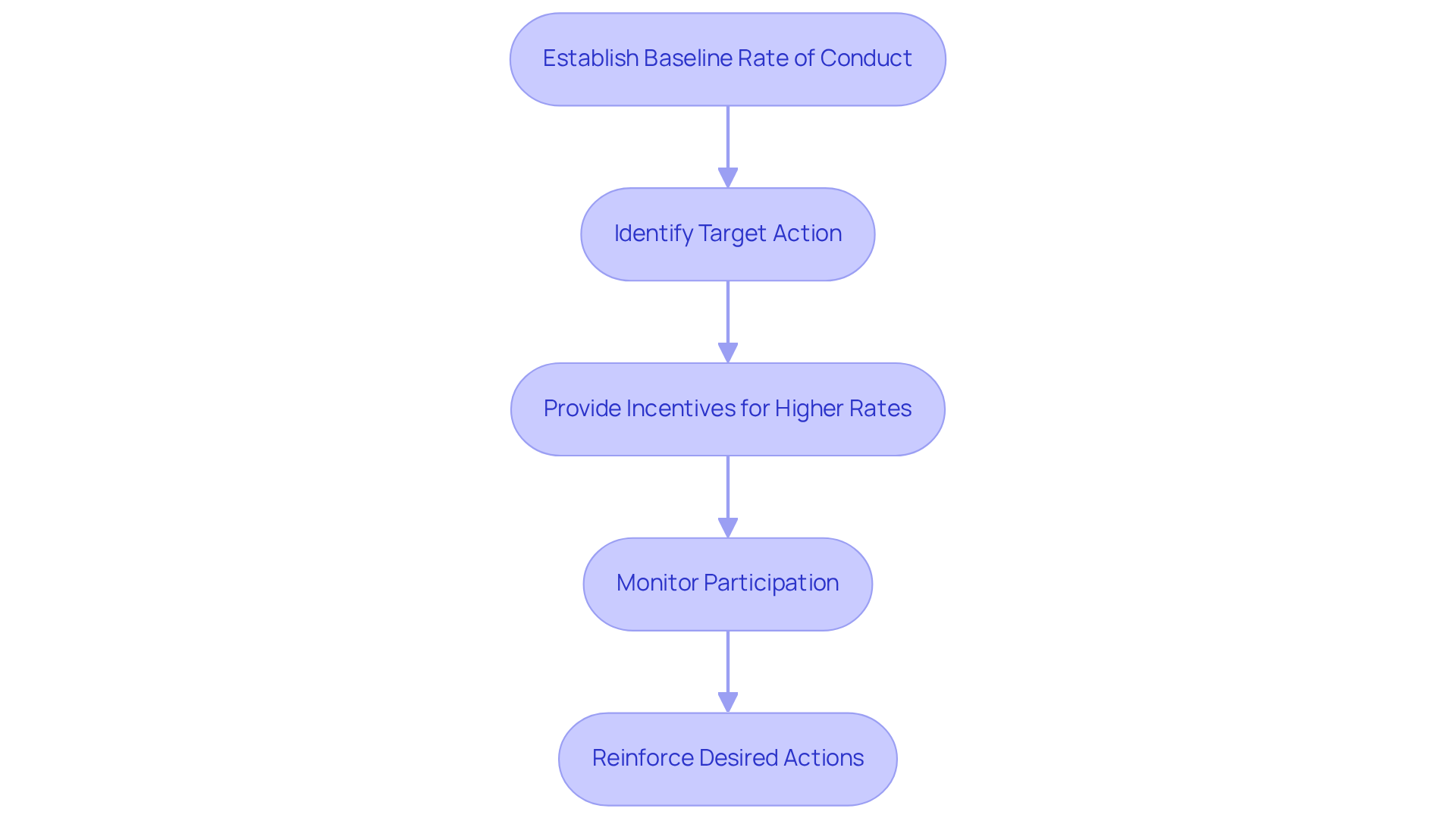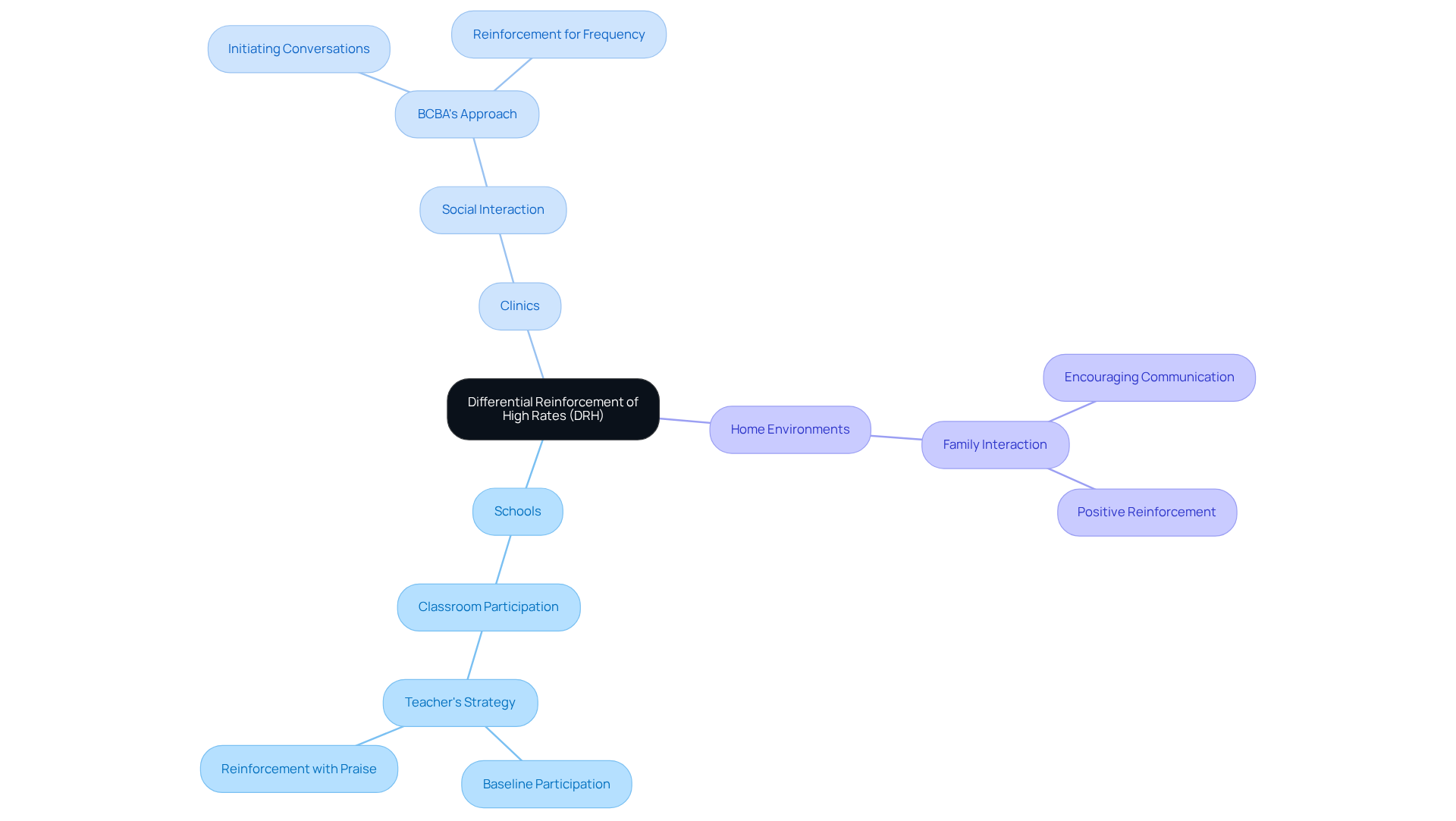September 6, 2025

The article centers on Differential Reinforcement of High Rates of Behavior (DRH) in Applied Behavior Analysis (ABA), defining it as a strategic approach designed to enhance the frequency of desired behaviors while concurrently diminishing less desirable ones. This concept is illustrated through practical examples, such as promoting student participation in classrooms. Furthermore, the effectiveness of DRH is underscored by studies demonstrating significant improvements in behavior modification outcomes, establishing a compelling case for its application in various settings.
Differential Reinforcement of High Rates of Behavior (DRH) stands as a cornerstone in the realm of Applied Behavior Analysis, presenting a structured method to amplify desired behaviors while diminishing less favorable ones. By emphasizing the reinforcement of actions that surpass a specified baseline, DRH not only promotes positive conduct but also cultivates an atmosphere of heightened engagement.
Yet, the challenge emerges in the effective implementation of these strategies across varied settings. How can practitioners ensure that DRH is customized to address individual needs and optimize its impact?
This article explores the definition, context, and practical applications of DRH, shedding light on its transformative potential within educational and therapeutic frameworks.
Differential Reinforcement of High Rates of Conduct (drh aba) represents a strategic behavioral intervention within Applied Behavior Analysis, focusing on the reinforcement of a target action when it occurs at a frequency surpassing a predetermined baseline. The primary objective of drh aba is to elevate the frequency of preferred actions while concurrently diminishing the support for lower frequencies of the same action.
For example, in an educational context, a child may be encouraged to raise their hand to participate in class discussions, receiving praise or tokens for doing so more frequently than before. This approach not only fosters desired actions but also mitigates occurrences of unsuitable conduct by redirecting focus towards positive reinforcement.
Recent studies underscore the effectiveness of DRH across various environments, showcasing its substantial influence on modifying behaviors in children. Effective implementations of drh aba in educational settings have illustrated that consistent reinforcement of high levels of conduct can lead to heightened engagement and participation among students, ultimately enriching their learning experiences.
As highlighted by Gauld and Miller, effective training and collaborative interaction are essential for trainers to successfully execute DRH strategies, ensuring that staff are equipped with the requisite skills and knowledge to promote favorable behavioral outcomes.

In the realm of Applied Behavior Analysis, drh aba, or Differential Reinforcement of High Rates, stands as a pivotal strategy for modifying actions, particularly in educational and therapeutic settings where the goal is to increase the frequency of specific behaviors. By strengthening the rates of preferred actions, drh aba not only fosters positive conduct but also reduces the occurrence of maladaptive behaviors. This technique is often used in conjunction with other differential strategies, such as:
Creating a comprehensive approach to behavior management.
Current trends in ABA underscore the integration of technology and data-driven practices with DRH ABA, significantly enhancing the effectiveness of interventions and promoting meaningful change in behaviors. For instance, a study published in the Journal of Positive Behavior Interventions revealed that classroom settings utilizing positive incentives saw a remarkable 78% decrease in disruptive behaviors alongside a 67% increase in on-task activities. Furthermore, a comprehensive study indicated that 87% of participants achieved mastery of targeted social skills through integrated approaches, illustrating the practical application of drh aba in real-life scenarios.
As highlighted in the Journal of Applied Behavior Analysis, the effectiveness percentages of differential strengthening methods average 76%, underscoring the importance of drh aba in successful modification strategies tailored to individual needs. This data invites reflection: how can the principles of DRH be effectively implemented in your current practices? Consider the potential benefits of adopting these strategies to enhance behavioral outcomes.

Key features of DRH include establishing a baseline rate of conduct, identifying a target action, and providing incentives based on achieving higher rates than the baseline. This mechanism relies on the principles of operant conditioning, where actions are shaped through reinforcement. For example, if a student typically raises their hand to answer questions twice per class, a DRH strategy would reinforce them for raising their hand three or more times. This gradual increase in expectations motivates individuals to participate more frequently in the desired actions, fostering a positive learning atmosphere.

Practical examples of Differential Reinforcement of High Rates (DRH) implementation can be found across various settings, including schools, clinics, and home environments. For instance, in a classroom, a teacher may employ DRH to foster greater student participation in discussions. By establishing a baseline of participation—such as requiring students to answer questions at least once per class—the teacher can reinforce those who exceed this rate with praise or rewards.
In a clinical context, a Board Certified Behavior Analyst (BCBA) might collaborate with a child with autism to enhance their social interactions by providing reinforcement for initiating conversations with peers more frequently than previously observed.
These examples underscore the adaptability of DRH to meet the specific needs of individuals, effectively promoting positive behavior change.

Differential Reinforcement of High Rates of Behavior (DRH) stands as a crucial instrument within Applied Behavior Analysis, designed to elevate the frequency of desired behaviors while mitigating less favorable actions. By concentrating on reinforcing behaviors that surpass a predetermined baseline, DRH not only amplifies positive conduct but also cultivates an environment conducive to learning and growth. This strategic approach proves particularly effective in educational and therapeutic contexts, where fostering engagement and participation is paramount.
The article underscores the essential components of DRH, including:
Practical examples demonstrate DRH's versatility, highlighting its application in classrooms and clinical settings to encourage active participation and social interactions. Moreover, the integration of data-driven practices and technology significantly enhances the effectiveness of DRH, as evidenced by notable reductions in disruptive behaviors and improvements in social skills among participants.
Ultimately, embracing the principles of Differential Reinforcement of High Rates of Behavior can yield transformative outcomes in behavior modification. By prioritizing positive reinforcement and devising tailored strategies, educators and practitioners can profoundly influence individuals’ learning experiences and social interactions. The potential benefits of implementing DRH are substantial, prompting reflection on how these techniques can be adapted to meet the specific needs of diverse populations.
What is Differential Reinforcement of High Rates of Behavior (DRH)?
Differential Reinforcement of High Rates of Behavior (DRH) is a behavioral intervention in Applied Behavior Analysis that reinforces a target behavior when it occurs at a frequency higher than a predetermined baseline.
What is the primary objective of DRH?
The primary objective of DRH is to increase the frequency of preferred behaviors while simultaneously decreasing reinforcement for lower frequencies of the same behavior.
Can you provide an example of DRH in an educational setting?
In an educational context, a child may be encouraged to raise their hand to participate in class discussions, receiving praise or tokens for doing so more frequently than before.
How does DRH affect behavior in children?
Recent studies have shown that DRH is effective in various environments, particularly in modifying behaviors in children by increasing engagement and participation while reducing inappropriate conduct.
What are the key factors for successful implementation of DRH strategies?
Effective training and collaborative interaction among trainers and staff are essential for successfully executing DRH strategies, ensuring that they have the necessary skills and knowledge to promote positive behavioral outcomes.
Our expert recruitment strategies and AI-driven sourcing ensure that you receive top-notch candidates quickly, without compromising on quality. Whether you’re looking for BCBAs, Clinical Directors, or RBTs, we’ve got you covered.